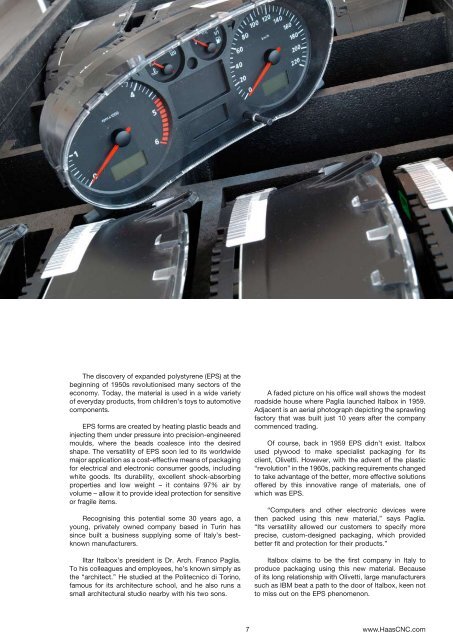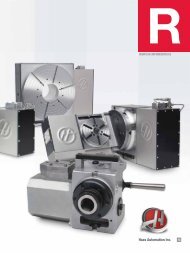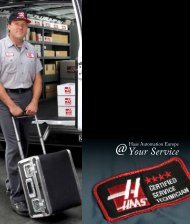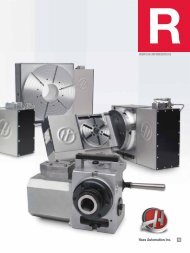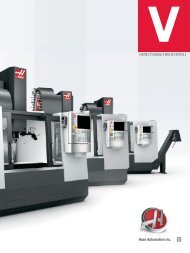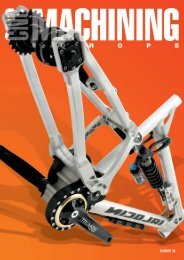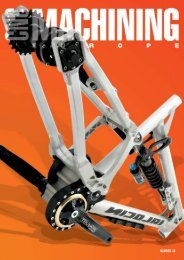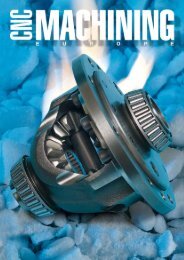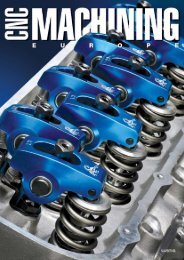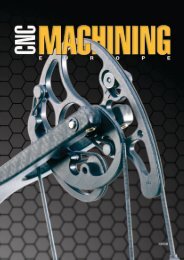download - Haas Automation, Inc.
download - Haas Automation, Inc.
download - Haas Automation, Inc.
You also want an ePaper? Increase the reach of your titles
YUMPU automatically turns print PDFs into web optimized ePapers that Google loves.
The discovery of expanded polystyrene (EPS) at the<br />
beginning of 1950s revolutionised many sectors of the<br />
economy. Today, the material is used in a wide variety<br />
of everyday products, from children’s toys to automotive<br />
components.<br />
EPS forms are created by heating plastic beads and<br />
injecting them under pressure into precision-engineered<br />
moulds, where the beads coalesce into the desired<br />
shape. The versatility of EPS soon led to its worldwide<br />
major application as a cost-effective means of packaging<br />
for electrical and electronic consumer goods, including<br />
white goods. Its durability, excellent shock-absorbing<br />
properties and low weight – it contains 97% air by<br />
volume – allow it to provide ideal protection for sensitive<br />
or fragile items.<br />
Recognising this potential some 0 years ago, a<br />
young, privately owned company based in Turin has<br />
since built a business supplying some of Italy’s bestknown<br />
manufacturers.<br />
Iltar Italbox’s president is Dr. Arch. Franco Paglia.<br />
To his colleagues and employees, he’s known simply as<br />
the “architect.” He studied at the Politecnico di Torino,<br />
famous for its architecture school, and he also runs a<br />
small architectural studio nearby with his two sons.<br />
A faded picture on his office wall shows the modest<br />
roadside house where Paglia launched Italbox in 1959.<br />
Adjacent is an aerial photograph depicting the sprawling<br />
factory that was built just 10 years after the company<br />
commenced trading.<br />
Of course, back in 1959 EPS didn’t exist. Italbox<br />
used plywood to make specialist packaging for its<br />
client, Olivetti. However, with the advent of the plastic<br />
“revolution” in the 19 0s, packing requirements changed<br />
to take advantage of the better, more effective solutions<br />
offered by this innovative range of materials, one of<br />
which was EPS.<br />
“Computers and other electronic devices were<br />
then packed using this new material,” says Paglia.<br />
“Its versatility allowed our customers to specify more<br />
precise, custom-designed packaging, which provided<br />
better fit and protection for their products.”<br />
Italbox claims to be the first company in Italy to<br />
produce packaging using this new material. Because<br />
of its long relationship with Olivetti, large manufacturers<br />
such as IBM beat a path to the door of Italbox, keen not<br />
to miss out on the EPS phenomenon.<br />
7 www.<strong>Haas</strong>CNC.com


